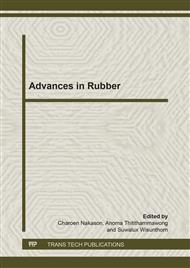p.15
p.20
p.24
p.30
p.34
p.41
p.45
p.49
p.53
A Comparative Analysis of Smallholders Tapping Practices in Four Rubber Producing Regions of Thailand
Abstract:
Rubber has been grown for long in the South and East of Thailand. Since 2005, rubber plantations have largely spread to new regions, in the North and above all in the Northeast. Tapping is one of the most important practices to optimize the yield of rubber plantations and farmers income [. If tapping practices are well documented in the traditional growing areas [2, , we lack information for the new rubber producing regions. And so far, no study has been done at the level of the country. Therefore, a survey was conducted with 219 rubber farmers from 10 provinces in four rubber producing regions to describe farmers tapping practices. The objective was to compare farmers practices in the different regions and try to identify some standardization or differentiation factors. Results show that tapping systems used by the farmers vary with the region but everywhere, even in the South and Centre east, the real tapping practices are not really intensive. Tapping practices seem to be linked to farmers rubber experience, the size of mature plantation, the rainfall and the length of the leaf-fall period. So finally, tapping days are irregularly distributed throughout the year which probably affects latex physiology and so, the potential yield of rubber plantations.
Info:
Periodical:
Pages:
34-37
Citation:
Online since:
November 2013
Keywords:
Price:
Сopyright:
© 2014 Trans Tech Publications Ltd. All Rights Reserved
Share:
Citation:


